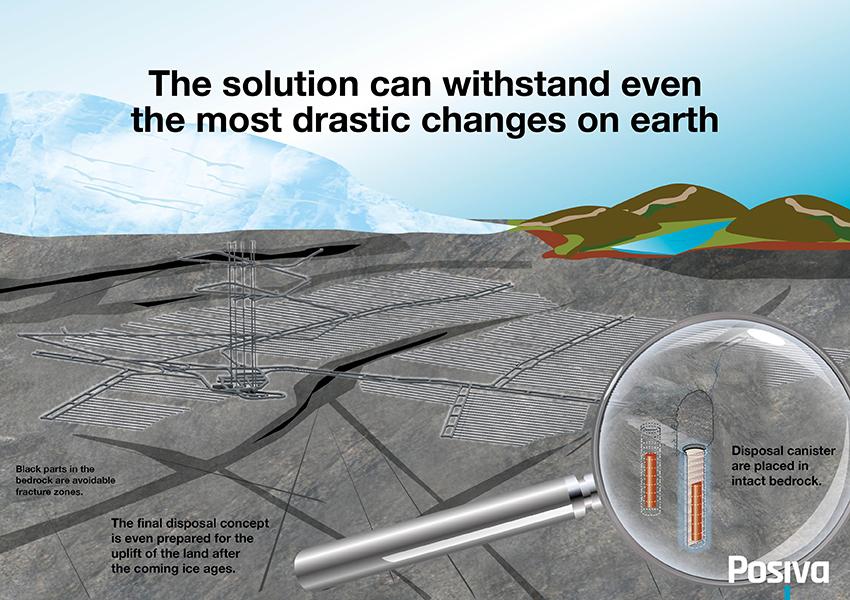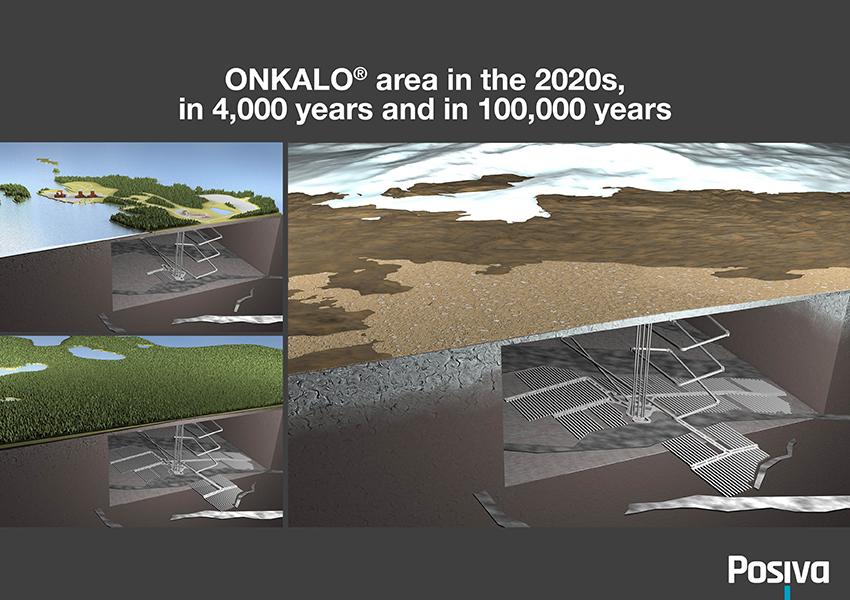Biosphere studies
Biosphere refers to the part of Earth’s surface where life is possible. In order to ensure the long-term safety of final disposal, biosphere studies and various types of modelling far into the future have been carried out in Olkiluoto ever since Olkiluoto was selected as the final disposal site for spent nuclear fuel.
Alternative development models need to be analysed far into the future, as the radioactivity of spent nuclear fuel is estimated to decrease to the level of a rich uranium ore deposit in little over 200,000 years.
The safety case of the disposal facility must take into account changes in climate over a long period of time, up to about one million years. Researchers must be able to assess the impact of sea level changes, climate change and land use in the area on the underground final disposal solution and how well it will withstand these changes.
In connection with biosphere studies, the ecosystems of Olkiluoto and its immediate surroundings have been carefully mapped and, for example, deep groundwater discharge areas have been analysed. Water movements in bedrock are well known: groundwater at the depth of hundreds of metres is oxygen-free and it flows only a little. Therefore, its ability to corrode the copper of the canister is weak.
When analysing changes taking place after hundreds of thousands of years, uncertainties cannot be avoided. For example, the time of the next glaciation phase, i.e. an ice age, is linked to human activities. If carbon dioxide emissions continue at the present level, Olkiluoto will not be covered by an ice sheet until approx. 400,000 years. If mankind succeeds in reducing emissions, the glaciation phase and permafrost period preceding it could come in approx. 50,000 years.

Due to land uplift, Olkiluoto will be inland in 2,000–3,000 years as the coastline retreats west. On the other hand, the greenhouse effect may cause sea levels to rise. In an extreme case, Olkiluoto may even end up underneath the sea level once again for several thousands of years.
The starting point for final disposal is that the engineer release barriers will withstand even major changes taking place on Earth. The canisters are placed in bedrock that is as solid as possible and where there is an insignificant number of water conductive fraction zones. Solid rock protects the canisters even in the event of earthquakes in the area that occur after an ice age due to land uplift.
The applied multi-barrier principle has been designed so that spent fuel will not pose a safety risk to future generations. However, biosphere studies also consider the possibility that the release barriers would fail and radionuclides would be released from the canister. Modelling based on groundwater flows can predict how and where radioactivity would be discharged in the surface environment in such a case. Transport models of the surface environment, on the other hand, can be used to predict how transport would continue in the biosphere. Even in such cases, radiation doses to humans and the environment resulting from final disposal would remain insignificantly small.
